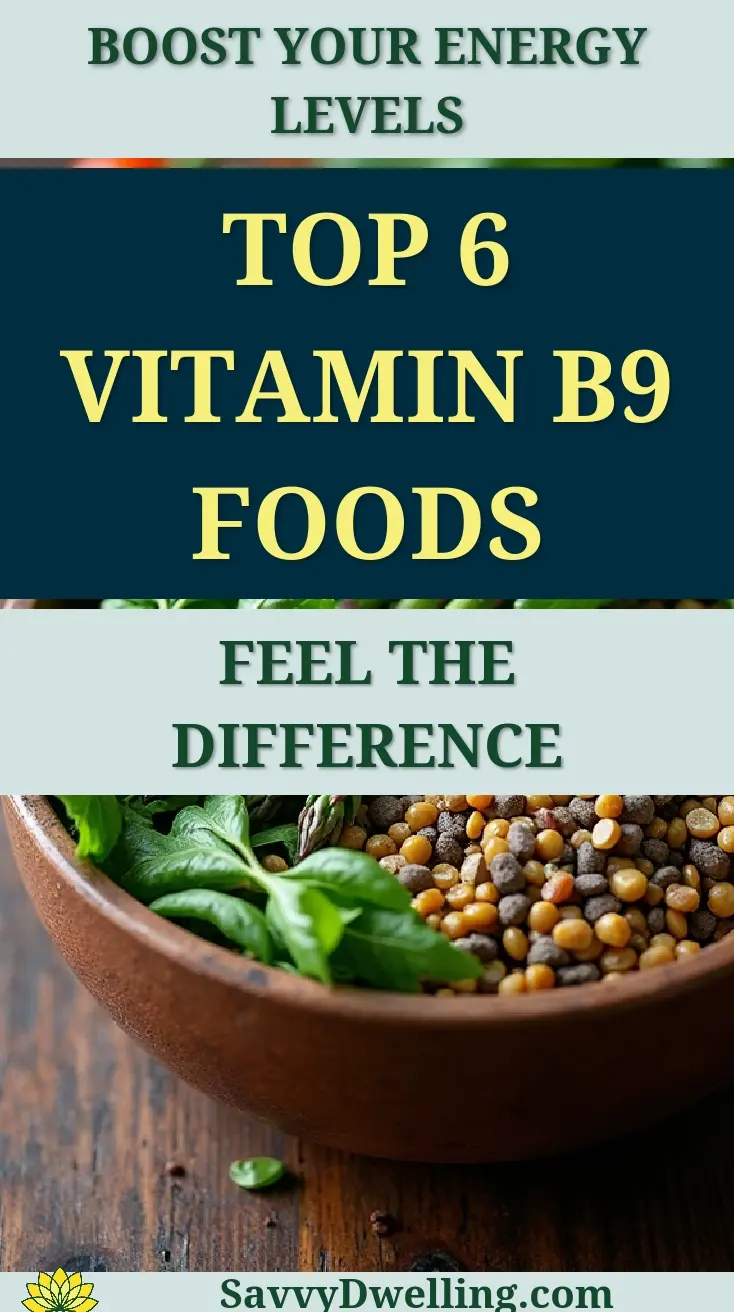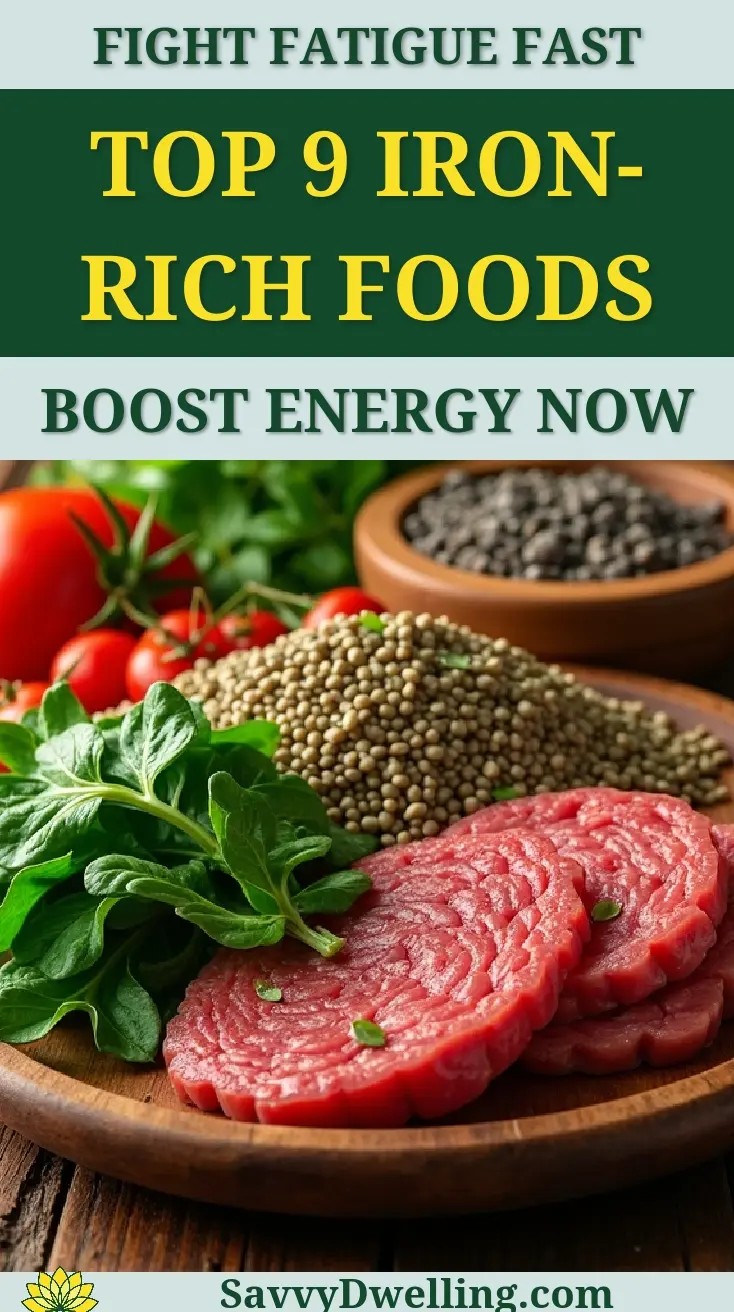The Complete Guide to Plant-based Protein Sources for Optimal Health and Wellness
Wondering if your plant-based diet provides enough protein to fuel your active lifestyle? Many people transitioning away from animal products worry about meeting their protein needs while maintaining energy levels and muscle health.
This comprehensive guide breaks down the best plant-based protein sources and shows you exactly how to combine them for maximum nutritional benefit. We’ve researched and tested countless protein-rich plants to bring you practical strategies that work in real kitchens with real schedules.
Contents
- At a Glance: The Best Plant-based Protein Solutions
- 1. Legumes and Pulses: Your Protein Powerhouse Foundation
- 2. Complete Plant Proteins: Quinoa and Amaranth
- 3. Nuts and Seeds: Concentrated Protein in Small Packages
- 4. Soy-based Proteins: Tofu, Tempeh, and Edamame
- 5. Whole Grains: Beyond Basic Carbohydrates
- 6. Seitan and Protein-rich Vegetables
- 7. Plant-based Protein Powders and Supplements
- 8. Protein Combining: Creating Complete Amino Acid Profiles
- Common Mistakes to Avoid When Building Plant-based Protein Intake
- Frequently Asked Questions
- Final Words
- Additional Resources for You:
At a Glance: The Best Plant-based Protein Solutions
Choosing the right plant-based protein sources can feel overwhelming when you’re starting your wellness journey. You want options that deliver real nutritional value without complicated preparation or breaking your budget. Exploring the best sources of plant-based protein can help simplify your choices and enhance your meals. Foods like lentils, chickpeas, and quinoa are not only nutritious but also easy to incorporate into your daily diet.
This quick reference table shows you exactly what you’re getting from each protein powerhouse. Complete proteins contain all nine essential amino acids your body needs but can’t make on its own.
| Protein Source | Protein per Serving | Complete Protein | Best For |
|---|---|---|---|
| Quinoa (1 cup cooked) | 8g | Yes | Complete amino acid profile |
| Lentils (1 cup cooked) | 18g | No | Budget-friendly, versatile |
| Hemp Seeds (3 tbsp) | 10g | Yes | Quick addition to meals |
| Tofu (4 oz) | 10g | Yes | Meat substitute in cooking |
| Chickpeas (1 cup cooked) | 15g | No | Meal prep and snacking |
| Spirulina (2 tbsp) | 8g | Yes | Smoothies and supplements |
Notice how lentils pack the biggest protein punch per serving at 18 grams. While they’re not complete proteins on their own, you can easily combine them with grains throughout your day to get all essential amino acids.
Hemp seeds and spirulina shine as complete proteins that mix seamlessly into existing meals. Three tablespoons of hemp seeds scattered over your morning oatmeal delivers 10 grams of complete protein without changing the taste.
Quinoa stands out among best plant-based proteins because it cooks like rice but provides complete amino acid coverage. This makes meal planning simpler when you’re learning how to get protein on a plant-based diet.
1. Legumes and Pulses: Your Protein Powerhouse Foundation
Why Legumes Support Your Protein Needs
Legumes stand out as one of the most affordable and accessible plant-based protein sources you can add to your diet. These nutritional powerhouses provide 15-18 grams of protein per cooked cup while delivering substantial fiber, folate, and iron. Incorporating high-fiber foods like legumes is essential for digestive health and overall well-being. In fact, adding legumes to your meals can be part of a balanced diet that includes various foods high in fiber.
What makes legumes particularly valuable is their ability to complement other plant foods perfectly. When you pair legumes with grains, you create a complete amino acid profile that rivals animal proteins. This combination strategy forms the backbone of healthy plant-based eating worldwide.
Beyond their protein content, legumes offer exceptional satiety. Their high fiber content slows digestion, helping you feel full longer and stabilize blood sugar levels throughout the day.
Top Legume Protein Sources
Lentils: The Versatile Champion
Red, green, and black lentils each bring unique textures and flavors to your meals. One cup of cooked lentils provides 18 grams of protein plus 15 grams of fiber, making them one of the most efficient protein sources from plants.
Red lentils cook quickly and break down into creamy textures perfect for soups and curries. Green and black varieties hold their shape better, making them ideal for salads, grain bowls, and hearty stews.
Chickpeas: The Satisfying All-Star
Chickpeas deliver 15 grams of protein per cooked cup and transform into countless dishes. Their nutty flavor and firm texture make them perfect for roasting, blending into hummus, or tossing into salads.
Aquafaba, the liquid from canned chickpeas, acts as an excellent egg replacer in baking. This versatility makes chickpeas a true kitchen staple for plant-based cooking.
Black Beans: The Fiber-Rich Option
Black beans pack 15 grams of protein alongside an impressive 15 grams of fiber per cup. Their rich, earthy flavor pairs beautifully with Latin American seasonings and creates satisfying plant-based burgers.
The deep color indicates high anthocyanin content, providing antioxidant benefits beyond their protein contribution. These compounds support heart health and may help reduce inflammation.
Simple Preparation Methods
Dried legumes require overnight soaking but offer better texture and flavor control than canned versions. To quick-soak dried beans, cover with boiling water and let stand for one hour before cooking.
- Rinse dried legumes and remove any debris or damaged beans
- Soak overnight in water covering beans by 2 inches
- Drain soaking water and rinse before cooking
- Simmer in fresh water for 45-90 minutes depending on variety
- Test for tenderness and season during final 10 minutes
Canned legumes save time and work well for quick meals. Always rinse canned beans to reduce sodium content by up to 40%.
Storage Tips for Maximum Freshness
Dried legumes stay fresh for 2-3 years when stored in airtight containers in cool, dry locations. Label containers with purchase dates and rotate stock to use older supplies first.
Cooked legumes keep refrigerated for 4-5 days or freeze for up to 6 months. Freeze in portion-sized containers for easy meal additions throughout busy weeks.
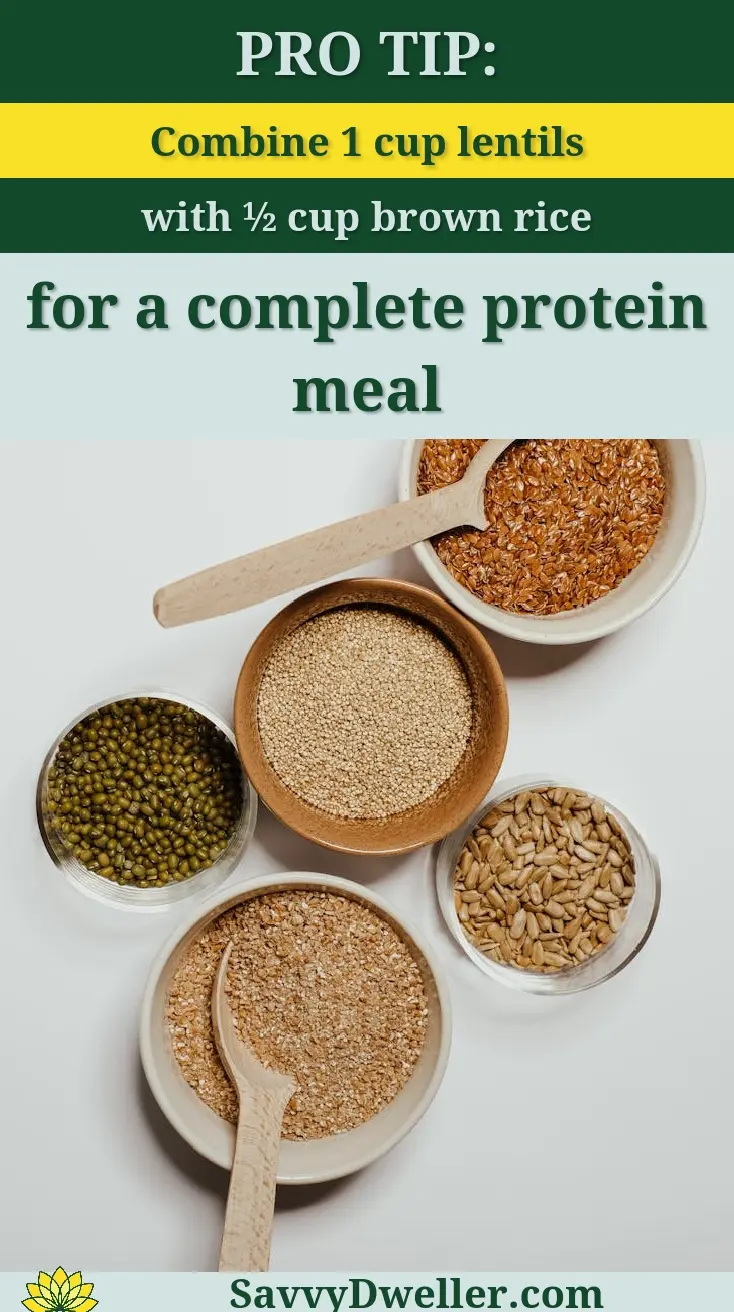
2. Complete Plant Proteins: Quinoa and Amaranth
Understanding Complete Protein Benefits
Complete proteins contain all nine essential amino acids your body cannot produce independently. Most plant-based protein sources lack one or more essential amino acids, but quinoa and amaranth provide complete profiles naturally.
This completeness means you can rely on these grains as primary protein sources without combining them with other foods. They offer particular value for athletes and active individuals who need efficient protein absorption.
Quinoa: The Ancient Grain Superfood
Quinoa provides 8 grams of complete protein per cooked cup, plus significant amounts of magnesium, phosphorus, and manganese. Its light, fluffy texture and mild nutty flavor make it adaptable to both sweet and savory preparations.
Three main varieties offer different cooking properties: white quinoa cooks fastest with the mildest flavor, red quinoa holds its shape well in salads, and black quinoa provides the most pronounced nutty taste.
Cooking Methods for Best Results
Proper quinoa preparation starts with thorough rinsing to remove bitter saponins from the seed coating. Rinse quinoa in fine-mesh strainer under cold water until water runs clear, usually 2-3 minutes.
- Toast rinsed quinoa in dry pan for 2-3 minutes for enhanced flavor
- Add liquid using 2:1 ratio (2 cups liquid to 1 cup quinoa)
- Bring to boil, then reduce heat and simmer covered for 15 minutes
- Remove from heat and let stand 5 minutes before fluffing with fork
- Check for tenderness and transparency in grains
Flavor Enhancement Tips
Cooking quinoa in vegetable or mushroom broth instead of water adds depth and richness. Adding a bay leaf, garlic clove, or strip of kombu during cooking infuses subtle flavors throughout the grain. These little tweaks not only enhance the taste but also unlock surprising health benefits. For instance, cooking quinoa in broth can increase its nutrient absorption, making each bite more beneficial for your body.
Toast quinoa with spices like cumin, coriander, or turmeric before adding liquid for aromatic, globally-inspired dishes.
Amaranth: The Overlooked Protein Source
Amaranth delivers 9 grams of complete protein per cooked cup with a unique texture that ranges from fluffy to porridge-like depending on preparation. This ancient grain provides more protein per serving than quinoa while offering significant calcium and iron.
Unlike quinoa, amaranth becomes naturally creamy when cooked, making it excellent for breakfast porridges and as a thickener for soups and stews.
Creative Ways to Use These Grains
Both quinoa and amaranth work beautifully in meal prep scenarios. Cook large batches on weekends and use throughout the week in grain bowls, stuffed vegetables, and protein-rich salads.
Pop amaranth seeds in a dry skillet for a crunchy topping that adds protein to smoothie bowls and yogurt. Ground amaranth flour can replace up to 25% of wheat flour in baking recipes for added protein content.
Also See: 10 Best Foods to Eat When You’re Sick With a Cold
3. Nuts and Seeds: Concentrated Protein in Small Packages
Hemp Seeds: The Complete Protein Seed
Hemp seeds provide 10 grams of complete protein in just 3 tablespoons, making them one of the most concentrated plant protein sources. Their mild, nutty flavor blends seamlessly into smoothies, yogurt, and oatmeal without overwhelming other ingredients.
Beyond protein, hemp seeds offer ideal omega-3 to omega-6 fatty acid ratios and provide all essential amino acids in easily digestible form. They require no preparation and can be eaten straight from the package.
Chia Seeds: Protein Plus Omega-3s
Two tablespoons of chia seeds deliver 4 grams of protein along with exceptional omega-3 fatty acid content. When soaked in liquid, chia seeds form a gel-like consistency perfect for puddings, overnight oats, and egg replacements in baking. Chia seeds aren’t just versatile; they’re also packed with numerous health benefits. Incorporating them into your diet can enhance your overall well-being in several amazing ways.
Their ability to absorb 10-12 times their weight in liquid makes them valuable for creating satisfying, protein-rich meals that keep you full for hours.
Almonds and Almond Butter
One ounce of almonds provides 6 grams of protein plus vitamin E, magnesium, and healthy monounsaturated fats. Natural almond butter concentrates these nutrients while offering convenient protein addition to smoothies, toast, and sauces.
Choose raw or dry-roasted almonds over oil-roasted versions to avoid unnecessary added fats. Soaking almonds for 8-12 hours improves digestibility and nutrient absorption.
Pumpkin Seeds: The Mineral-rich Choice
Pumpkin seeds pack 5 grams of protein per ounce along with significant zinc, magnesium, and iron content. Their naturally salty flavor makes them perfect for snacking or adding crunch to salads and grain dishes.
Raw pumpkin seeds can be toasted with various seasonings for customized flavors. Try combinations like nutritional yeast and garlic powder or cinnamon and maple syrup for sweet applications.
Portion Control Guidelines
Nuts and seeds provide concentrated calories alongside their protein benefits. Stick to 1-ounce portions (roughly 1/4 cup) to balance protein intake with calorie management. Including a variety of nuts in your diet can enhance overall health. Walnuts, in particular, offer unique benefits that set them apart from other nuts, making them a valuable addition to a healthy diet.
Pre-portion nuts and seeds into small containers or bags to avoid overeating. This strategy helps you enjoy their protein benefits without exceeding daily calorie needs.
Storage for Maximum Nutrition
Store nuts and seeds in airtight containers in cool, dry locations to prevent rancidity. Refrigerate or freeze high-fat varieties like walnuts and flaxseeds to extend freshness up to one year.
Buy nuts and seeds in smaller quantities more frequently rather than bulk purchases that may go stale. Check for fresh, mild aromas and avoid any with bitter or off odors.
4. Soy-based Proteins: Tofu, Tempeh, and Edamame
Why Soy Supports Plant-based Nutrition
Soy supplies a complete amino acid profile, making it one of the best plant-based proteins for covering all your bases. It’s rich in iron and, when calcium-set, offers meaningful calcium-handy when building a balanced list of plant food protein sources.
Digestibility is high (PDCAAS near 1.0), so you use the protein well. Typical servings deliver solid numbers: tofu (4 oz) ~10g, tempeh (3 oz) ~16–18g, edamame (1 cup shelled) ~17g.
Tofu: The Versatile Protein Canvas
Tofu adapts to almost any recipe-stir-fries, scrambles, soups, and desserts. Choose the texture for the job: silken for smoothies and sauces, firm/extra-firm for sautéing or baking.
Think of tofu as a sponge: the drier it starts, the more flavor it soaks up. That’s the secret to turning this plant-based protein food source into a weeknight staple.
Pressing and Preparation Techniques
- 1 block firm or extra-firm tofu
- Clean kitchen towel or paper towels
- Tofu press or heavy pan + cutting board
- Optional: 1 tsp salt, 1 tbsp cornstarch
- Drain: Remove tofu from the package and drain well. Slice the block in half horizontally for faster pressing.
- Press: Wrap in a towel and press 15–30 minutes. Aim for a noticeable drop in moisture; rewrap once if the towel gets soaked.
- Texture Tweaks: For chewier tofu, freeze the whole block, then thaw and press again. Freeze–thaw creates craggy pores that drink up marinades.
- Firm-Up Bath (optional): Simmer cubes in salted water (1 tsp salt per quart) for 5 minutes; drain and pat dry. This tightens the surface and reduces crumbling.
- Prep to Cook: Toss dry cubes with a light coating of cornstarch and a pinch of salt before pan-searing for a crisp crust.
Flavor Absorption Methods
Use thinner marinades (less oil, more acid and salt) so flavors penetrate instead of sliding off. Aim for a 3:1 ratio of liquid to oil, with a touch of sweetness for balance.
- Score or crumble pressed tofu to expose more surface area.
- Whisk a base: 2 tbsp soy sauce, 1 tbsp rice vinegar or lime, 1 tsp maple, 1 tsp grated ginger, 1 small clove garlic, water to thin.
- Marinate 15–30 minutes for cubes; 5–10 minutes for crumbles. Pat lightly before cooking to avoid sputter.
- High-heat sear or bake at 425°F (220°C) for 20–25 minutes, flipping once. Brush with extra marinade at the end.
- Teriyaki quick-fix: Soy sauce + mirin + grated ginger.
- Chili-lime: Lime juice + chili paste + a dash of sesame oil.
- Miso-garlic: White miso + rice vinegar + minced garlic + water to thin.
Tempeh: The Fermented Protein Option
Tempeh brings more bite and a nutty depth, plus fiber and a sturdy 16–18g protein per 3 oz. Fermentation can aid digestibility compared to some other vegetarian protein sources.
Steam or blanch tempeh first to smooth any bitterness and prime it for sauces. Then it’s ready for crumbles, cutlets, or skewers.
- Prep: Slice or crumble. Steam 10 minutes or simmer in water for 5 minutes; drain.
- Marinate: Tamari + apple cider vinegar + maple + smoked paprika (15 minutes).
- Cook: Pan-sear with a little oil until browned, or bake at 400°F (205°C) for 18–20 minutes. Glaze in the last 3 minutes.
Edamame: The Simple Snack Solution
Edamame is the “grab-and-go” of plant proteins sources-17g per cup shelled and ready in minutes. It’s an easy way to get protein from plants without much prep.
- Boil or steam 5–6 minutes from frozen; drain well.
- Toss with sea salt, lemon zest, and chili flakes. Or stir into brown rice bowls, salads, and noodle soups.
- Mash with tahini, garlic, and lemon for a speedy edamame “hummus.”
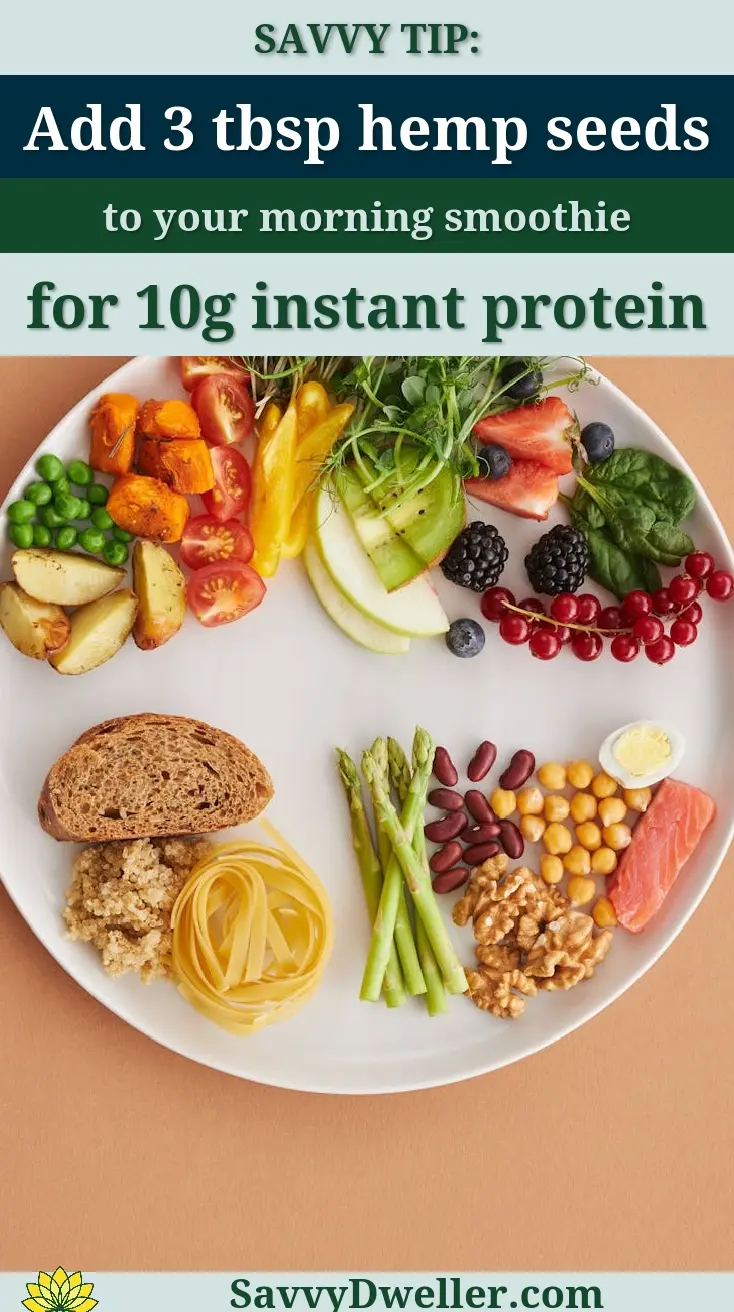
5. Whole Grains: Beyond Basic Carbohydrates
Protein Content in Common Grains
Whole grains add steady energy and meaningful protein, especially when you build meals with multiple plant protein sources. Here’s a quick plant protein sources list (per 1 cup cooked):
| Grain | Protein per Cup (Cooked) | Notes |
|---|---|---|
| Oats | ~5–6g | Great for breakfast or baking |
| Brown rice | ~5g | Neutral base for bowls |
| Farro (emmer) | ~7–8g | Chewy, hearty texture |
| Buckwheat | ~5–6g | Gluten-free pseudocereal |
| Barley | ~3–4g | Soup-friendly |
| Millet | ~6g | Fluffy or creamy |
| Sorghum | ~10g | Chewy, holds up in salads |
| Teff | ~9–10g | Tiny grain, rich flavor |
| Spelt | ~10–11g | Nutty, hearty berries |
Oats: The Breakfast Protein Boost
Build a bowl that carries you to lunch. Oats pair well with many sources of plant-based protein for an easy win.
- Overnight Oats: Mix 1/2 cup oats + 1/2 cup calcium-fortified soy milk + 1 tbsp chia + 1 tbsp peanut butter; chill overnight.
- Stovetop Creamy Oats: Simmer 1/2 cup oats in 1 cup soy milk; finish with hemp seeds and sliced banana.
- Savory Oats: Cook in veggie broth; top with sautéed mushrooms, spinach, and a spoon of miso.
Brown Rice: The Complementary Protein
Brown rice delivers ~5g protein per cup and a nutty chew. Pair it with legumes or soy to round out amino acids and raise the total protein from plants in the meal.
- Boil Method for Fluff: Rinse well. Boil in plenty of water 30–35 minutes; drain and steam 10 minutes covered.
- Flavor Boost: Stir in lime juice, chopped cilantro, and a drizzle of olive oil.
- Bowl Builder: Brown rice + black beans + roasted broccoli + salsa = a fast, balanced plate.
Farro and Ancient Grains
Farro, freekeh, spelt, teff, and sorghum bring chewy texture and higher protein than many refined grains. Freekeh (roasted green wheat) and sorghum stand up well in salads and pilafs.
Use a generous batch on meal-prep day to anchor quick, protein-forward bowls all week. Toss with lemon, herbs, and toasted pumpkin seeds for extra protein punch.
Cooking Methods for Better Digestion
- Whole grain (1 cup), water, fine salt
- Optional: 1 tbsp apple cider vinegar or lemon juice for soaking
- Rinse: Swish grains under cool water to remove dust and starch.
- Soak (optional but helpful): Cover with water + a splash of vinegar; soak 6–8 hours. Drain and rinse.
- Cook: Use 2.5–3 cups water per cup grain. Simmer until tender, then rest 5 minutes.
- Rice Safety Tip: For brown rice, use the boil-and-drain method to reduce residuals, then steam covered 10 minutes.
- Store: Cool quickly and refrigerate up to 4 days. Reheat with a splash of water to keep grains tender.
6. Seitan and Protein-rich Vegetables
Seitan: The Wheat-based Meat Alternative
Seitan is crafted from vital wheat gluten and delivers about 20–25g protein per 3 oz. The texture is satisfyingly meaty, making it one of the best plant based proteins for stir-fries, sandwiches, and skewers.
Skip seitan if you need to avoid gluten. For everyone else, it’s a convenient way to get protein on a plant-based diet with hearty bite.
Making Seitan at Home
- 1 cup vital wheat gluten, 2–3 tbsp chickpea flour
- 3/4 cup broth, 1 tbsp soy sauce, 1 tsp olive oil
- Simmering broth: 6 cups water, 1/4 cup soy sauce, garlic, bay leaf
- Mix: Combine dry ingredients. Stir in wet ingredients until a shaggy dough forms.
- Knead: 60–90 seconds only. Rest 5 minutes to relax gluten for a tender chew.
- Shape: Form into cutlets or a log. Do not over-compress.
- Simmer Gently: Add to barely simmering broth (no hard boil) 45–60 minutes. Gentle heat keeps the texture juicy, not spongy.
- Cool in Broth: Slice when cool. Pan-sear with your favorite sauce or bake with BBQ glaze.
Store-Bought Options
Look for short ingredient lists, at least 18–25g protein per serving, and moderate sodium. Plain “traditional” seitan gives you the most flexibility for sauces.
Pre-seasoned “chicken-style” or “beef-style” works for fast meals, but check labels for added sugars or excess oils. Slice thin for sandwiches; cube for stews and curries.
High-protein Vegetables
Vegetables won’t match seitan gram-for-gram, yet they meaningfully stack up when combined. Here are compact protein sources from plants (per 1 cup cooked unless noted):
- Green peas: ~8g
- Spinach: ~5g
- Collard greens: ~5g
- Broccoli: ~4g
- Brussels sprouts: ~4g
- Artichoke hearts: ~4–5g
- Asparagus: ~4g
- Kale: ~3–4g
- Mushrooms: ~3g
- Sweet corn: ~5g
Spinach and Dark Leafy Greens
Cook greens briefly to shrink volume and concentrate protein per serving. A quick sauté also mellows bitterness.
- Rinse and chop. Blanch 30–60 seconds in boiling water to reduce oxalates; drain well.
- Sauté with olive oil and garlic 1–2 minutes. Finish with lemon juice to support iron absorption.
- Stir into oats, pasta, or grain bowls to bump protein and minerals.
Brussels Sprouts and Broccoli
Roasting brings out sweetness and adds crisp edges that hold sauces. Toss with tahini or a sprinkle of nutritional yeast for extra protein and umami.
- Halve sprouts; cut broccoli into florets. Toss with oil, salt, and pepper.
- Roast at 425°F (220°C) for 18–22 minutes, flipping once.
- Finish with lemon-tahini or soy-maple glaze. Serve over sorghum or farro.
Combining Vegetables for Protein Enhancement
Mix high-protein vegetables to boost total grams without relying on a single ingredient. This strategy makes vegetarian sources of protein more satisfying. Incorporating a variety of foods can also enhance your energy levels. Foods like nuts, leafy greens, and whole grains are excellent choices for a natural energy boost.
- Green Pea + Broccoli Bowl: 1 cup peas (8g) + 1 cup broccoli (4g) + 1 tbsp hemp seeds (3g) ≈ 15g.
- Garlic Greens Medley: 1 cup spinach (5g) + 1 cup collards (5g) + mushrooms (3g) ≈ 13g.
- Roasted Brassica Mix: 1 cup Brussels sprouts (4g) + 1 cup cauliflower (3g) + 1 cup asparagus (4g) ≈ 11g.
Use these mixes alongside grains or soy foods for balanced plant protein nutrition facts. They fit neatly into everyday meals while raising protein per bite.
7. Plant-based Protein Powders and Supplements
When Supplements Can Support Your Goals
Supplements can bridge gaps when your schedule is tight, your appetite is low, or your protein needs rise with training. They’re also helpful if you’re learning how to get protein on a plant-based diet and want a consistent anchor per meal.
- Post-workout when whole meals aren’t practical.
- During travel or long workdays when plant food protein sources are limited.
- When you need predictable protein from plants without extra calories or bulk.
- If you’re allergic to common vegetarian protein sources and need an alternative.
Pea Protein Powder Benefits
Pea isolate delivers about 20–25 g protein per scoop, with 2–2.5 g leucine to support muscle protein building. It’s gluten-free and soy-free, making it a steady pick in a plant protein sources list.
Pea protein is rich in lysine but lighter in methionine, so pairing it with rice protein or oats creates a more complete amino acid profile. Many find it smooth in smoothies, oatmeal, and batter recipes.
- Choose “isolate” for higher protein and mild flavor; “concentrate” for more fiber.
- Look for ~4–6 g BCAAs per serving on the label for balanced plant protein nutritional facts.
- Bonus: pea protein often provides 15–30% DV iron per scoop.
Hemp Protein Powder
Hemp offers 12–15 g protein per 30 g scoop plus fiber and omega-3 ALA. It contains edestin, a highly digestible protein, and a broader mineral profile than many best plant-based proteins.
Expect a nutty, earthy taste and a thicker texture-great in overnight oats, pancakes, and hearty smoothies. For a higher protein hit, blend hemp powder 1:1 with pea or rice protein.
Spirulina and Chlorella
These microalgae are 55–70% protein by weight, but typical servings (1–2 tsp) add a modest 2–6 g protein. They shine as nutrient-dense boosters rather than primary protein food from plants.
Buy from controlled, tested sources to avoid contaminants and off-flavors. Spirulina’s B12 is not the active human form, so it’s not a reliable B12 source.
Quality Selection Guidelines
- Pick third-party tested products (NSF Certified for Sport, Informed Choice, USP) to confirm purity and label accuracy.
- Scan plant protein nutritional facts for ≥20 g protein, ≤3 g added sugar, and a full amino acid profile per serving.
- Favor short ingredient lists-protein, natural flavor, and minimal sweetener.
- Check for heavy metal testing (often noted as “meets Prop 65/CA standards”).
- For blends, look for pea + rice or pea + hemp to balance limiting amino acids.
- If sensitive to sweeteners, choose unflavored; sweeten with fruit or a date.
Integration into Daily Routine
- Set an anchor: use 1 scoop (20–25 g protein) in one meal daily to stabilize intake.
- Build a quick smoothie: 1 scoop pea or blend + 1 cup soy milk + fruit + greens; add 1 tbsp chia for extra plant-based protein facts food and fiber.
- Upgrade meals: stir unflavored powder into oatmeal, soups, or mashed potatoes for seamless protein from plants.
- Post-workout: shake 1 scoop with water or soy milk within 1–2 hours for convenient recovery support.
- Travel kit: pack single-serve sticks, a shaker bottle, and shelf-stable soy milk.
- Rotate weekly (pea, hemp, blends) to avoid flavor fatigue and broaden micronutrients.
8. Protein Combining: Creating Complete Amino Acid Profiles
The Science Made Simple: Understanding Amino Acids
Proteins are built from amino acids, nine of which are “essential” because your body can’t make them. Most protein sources from plants are lower in one or two essential amino acids-called “limiting amino acids.”
You don’t need to combine foods in the same bite; eating varied plant-based protein food sources over the day covers the gaps. Pairing smartly just makes it easier to hit a complete profile at each meal.
Classic Protein Combinations
Rice and Beans
Grains (rice) provide methionine; beans provide lysine. Together they form a complete pattern.
- 1 cup cooked brown rice (~5 g) + 1 cup black beans (~15 g) ≈ 20 g protein.
- Finish with salsa and citrus to boost iron absorption from legumes.
Hummus and Whole Grain Pita
Chickpeas bring lysine; whole grains add methionine. It’s a classic, portable lunch.
- 1 whole-wheat pita (~6 g) + 1/3 cup hummus (~6–7 g) ≈ 12–13 g protein.
- Sprinkle hemp seeds (3 tbsp, ~10 g) to raise total protein and texture.
Nut Butter and Whole Grain Bread
Peanuts or almonds pair well with the amino acid pattern of whole grains. Great for quick energy and steady fullness.
- 2 tbsp peanut butter (~7 g) + 2 slices whole grain bread (~8 g) ≈ 15 g protein.
- Add chia jam for fiber and omega-3s without extra fuss.
Modern Combination Strategies
- Pea + rice protein blend shake: complementary amino acids with 25–30 g protein per serving.
- Tofu + quinoa bowl: complete soy protein plus a complete ancient grain for 25–35 g per meal.
- Oats cooked in soy milk: turn breakfast into 18–25 g by swapping water for fortified soy milk.
- Lentil pasta + tahini sauce: legume-based noodles paired with sesame for ~25 g per plate.
- Buckwheat + pumpkin seeds: toast both for bowls or salads to balance lysine and methionine (~15–20 g depending on portions).
Common Mistakes to Avoid When Building Plant-based Protein Intake
Relying on Only One Protein Source
Eating the same protein every day narrows your amino acid and micronutrient range. Rotate across legumes, soy, grains, nuts, seeds, and microalgae to cover your bases.
- Weekly plan: 2–3 legume meals, 2 soy-based meals, 2 grain/seed-focused meals.
- Use a plant protein sources list to vary textures and flavors-keeps meals satisfying.
Ignoring Protein Quality and Absorption
Not all plant proteins digest the same. PDCAAS/DIAAS scores and leucine content shape how your body uses protein.
- Blend complementary proteins (e.g., pea + rice) to lift overall quality.
- Soak/sprout legumes and choose fermented soy (tempeh) to improve digestibility.
- Cook thoroughly; heat reduces trypsin inhibitors in beans and soy.
- Add vitamin C-rich foods with legumes to aid iron uptake while you hit protein goals.
Overlooking Proper Food Combinations
Missing the limiting amino acid reduces the meal’s protein “power.” Simple pairings fix this fast.
- Legumes + grains (bean chili + corn tortillas).
- Legumes + seeds (lentil salad + pumpkin seeds).
- Include complete plant-based protein sources like soy, quinoa, buckwheat, and hemp.
Neglecting Meal Prep and Planning
Protein-rich eating from plant foods gets easier when the building blocks are ready. Ten minutes now saves you all week, especially when paired with proper pre and post workout nutrition.
- Batch-cook 2 legumes (lentils, chickpeas) and 1 grain (quinoa, farro).
- Pre-portion 4–6 oz tofu/tempeh, marinated and ready to pan-sear.
- Jar three smoothie packs: fruit + greens + 1 scoop powder (add liquid later).
- Stock snacks: roasted edamame, nut/seed packs, legume pasta, shelf-stable soy milk.
- Keep a “protein from plants” bin so meals assemble in minutes.
Forgetting About Protein Timing Throughout the Day
Evenly spacing protein helps many people feel steady energy and stay full. Aim to include a meaningful source at breakfast, lunch, dinner, and one snack.
- Breakfast: oats with soy milk + hemp seeds (~20 g).
- Lunch: tofu-quinoa salad (~25–30 g).
- Snack: pea/rice protein shake (~20–25 g).
- Dinner: bean + brown rice bowl (~20 g).
These are general plant-based protein facts to guide your routine. Adjust portions to fit your preferences and activity level.
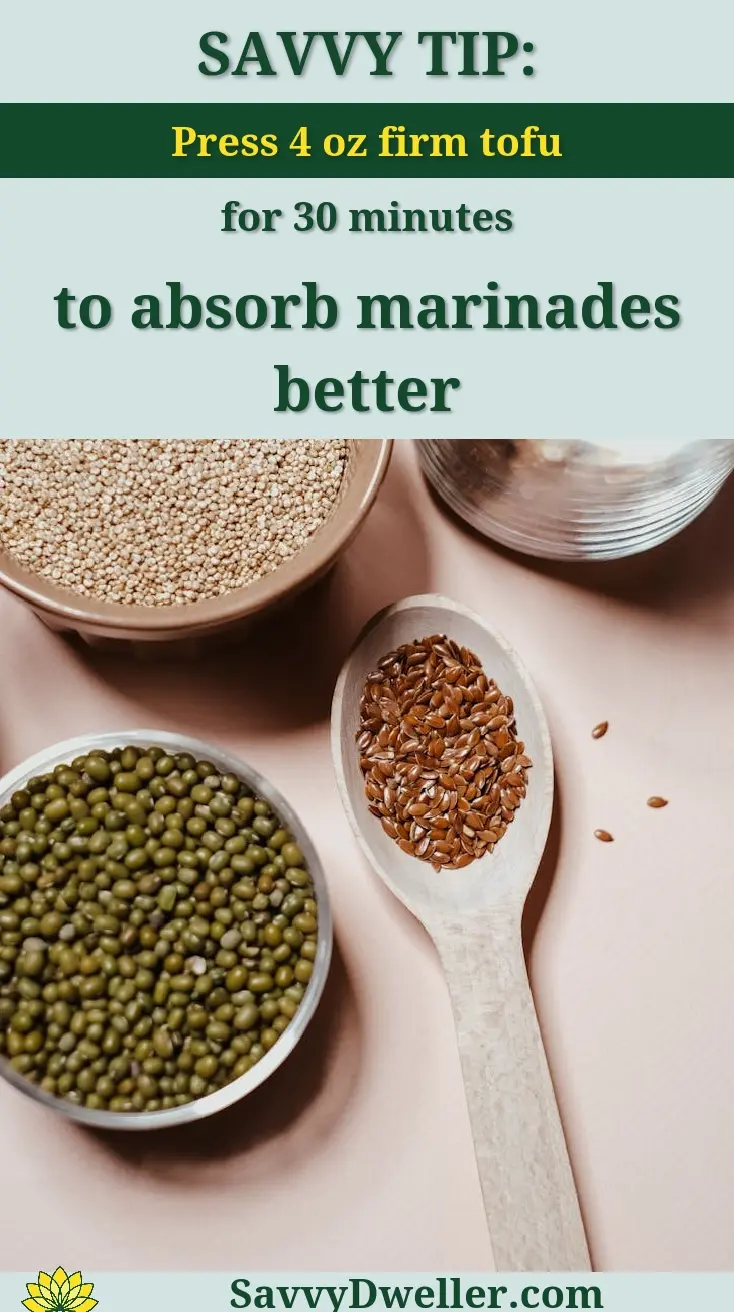
Frequently Asked Questions
How Much Protein Do I Actually Need Each Day on a Plant-based Diet?
The general recommendation is about 0.8 grams of protein per kilogram of body weight for sedentary adults, but this can increase to 1.2-2.0 grams per kilogram for active individuals or those building muscle. Since plant-based proteins may have lower digestibility, aim to slightly exceed these targets by incorporating a variety of sources like legumes, grains, and nuts throughout the day to ensure adequate intake.
What Are Some Easy Ways to Boost Protein Intake Without Supplements?
Focus on simple additions to your meals, such as sprinkling hemp seeds on salads or stirring chia seeds into oatmeal. For snacks, keep roasted chickpeas, edamame, or a tablespoon of nut butter on hand. Incorporating protein-rich vegetables like spinach or broccoli into stir-fries or smoothies can also provide an effortless boost without relying on powders.
Are There Any Plant-based Proteins That Are Particularly Good for Post-workout Recovery?
Yes, soy products like tofu or tempeh are ideal due to their complete amino acid profile, which supports muscle repair. For a quick option, a smoothie with pea protein powder or a quinoa bowl offers fast-digesting protein. Pairing these with carbohydrates, like fruit or whole grains, helps replenish energy stores and enhance recovery.
What Should I Look for When Reading Labels on Plant-based Protein Products?
Check for minimal ingredients and avoid added sugars or artificial additives. Look for products with at least 10-15 grams of protein per serving and ensure they contain essential amino acids or are fortified if aiming for completeness. Also, verify certifications like non-GMO or organic if those align with your preferences for quality and sustainability. To truly make informed choices, becoming familiar with nutrition labels is essential. This skill allows you to assess what contributes to overall health in a simple and effective way.
Final Words
Building a protein-rich plant-based lifestyle doesn’t have to feel overwhelming when you have the right knowledge and tools. The key to success lies in variety, combining different protein sources throughout your day to create complete amino acid profiles that support your body’s needs. From the budget-friendly versatility of lentils to the complete protein power of quinoa and hemp seeds, you now have a comprehensive toolkit to meet your nutritional goals.
Start small by incorporating just one or two new plant-based proteins into your weekly routine, then gradually expand your repertoire as you become more comfortable. Remember, sustainable changes happen when you take manageable steps rather than attempting a complete overhaul overnight. The combination strategies and preparation tips we’ve shared will help you create satisfying, protein-packed meals that actually taste great.
Your wellness journey extends far beyond just protein, and we’re here to support you every step of the way. Visit Savvy Dwelling for more evidence-based nutrition guides, meal prep strategies, and practical wellness solutions that fit seamlessly into your daily life. Take action today by choosing one protein source from our guide and incorporating it into this week’s meals – your body will thank you for it.

